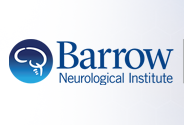Reversible cerebral vasoconstriction syndrome.
Document Type
Article
Abstract
Reversible cerebral vasoconstriction syndrome (RCVS) is a cerebrovascular disorder with a clinical picture that continues to be refined. It has presented to multiple subspecialties over the past several decades, bringing with it many questions regarding risk factors, diagnosis, and management. Answers have been forthcoming but many questions remain. RCVS presents with recurrent, secondary thunderclap headaches and predominantly affects young women. The mechanism of vasoconstriction is unclear, but there has been speculation regarding a hyperadrenergic state. Diagnosis requires physician awareness, vascular imaging, and knowledge of the differential. The hallmark of its diagnosis is reversibility. Management is empiric, usually with calcium-channel blockers, as there are no controlled treatment trials for RCVS. Randomized controlled trials are needed.
Medical Subject Headings
Adult; Coronary Angiography; Female; Humans; Tomography, X-Ray Computed; Vasoconstriction; Vasospasm, Intracranial; Vertebral Artery
Publication Date
3-1-2013
Publication Title
Headache
ISSN
1526-4610
Volume
53
Issue
3
First Page
570
Last Page
576
PubMed ID
23489219
Digital Object Identifier (DOI)
10.1111/head.12040
Recommended Citation
Yancy, Holly; Lee-Iannotti, Joyce K; Schwedt, Todd J; and Dodick, David W, "Reversible cerebral vasoconstriction syndrome." (2013). Neurology. 1918.
https://scholar.barrowneuro.org/neurology/1918


